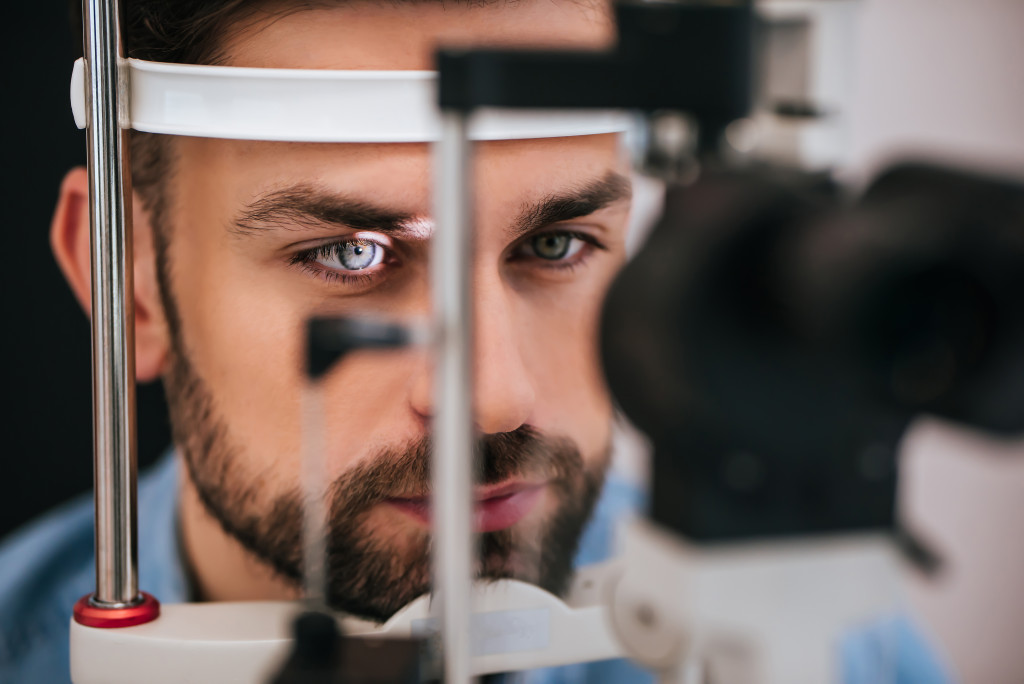Many of us now have professions that demand us to spend longer staring at computer displays. Your eyes may suffer as a result. Computer vision syndrome symptoms (CVS) include dry eyes, blurry vision, and a heightened sense of awareness. Unfortunately, t There isn’t just one issue. Eye strain and pain are only some side effects. 50% to 90% of people sitting in front of a monitor every day have at least some symptoms, as per a recent study.
People with jobs aren’t the only individuals impacted by this issue. Students who spend most of their school days staring at tablets or laptops may also have eye strain, mainly if the brightness and posture aren’t optimal.
How Do Computers Affect the Way We See?
Repetitive motion injuries, such as carpal tunnel syndrome, are similar to CVS in that they can cause pain. This occurs when your eyes repeatedly travel the same route. There’s a chance that things may worsen the more you continue the activity.
Computer work requires a lot of eye-tracking, which means your eyes have to adjust their focus constantly. As you read, they shift in and out of focus. You may have to glance at the documents before returning to your keyboard to type. When you see continually shifting and altering visuals, your eyes adjust their focus and transmit images to your brain that are as rapidly variable.
To do any of these tasks well, your eye muscles will have to put in a lot of work. Furthermore, unlike a piece of paper or a novel, the monitor imparts glare, flicker, and contrast. As a result, your eyes become dry and blurry while you’re working on a computer because you blink less regularly, according to research.
If you already have vision issues, lack glasses, or have an improper prescription for computer consumption, you’re more prone to problems.
What Are the Symptoms of Digital Eye Strain?
Your eye doctor will use your medical history and a comprehensive eye examination to determine a diagnosis. They will evaluate your symptoms to see if any health issues, medications, or external factors contribute to them.
During an eye exam, an optician will measure your eyesight’s clarity and the efficiency of how your eyes function together. Your doctor may wish to enlarge or dilate your pupils for a more thorough examination. They’ll then use an ophthalmoscope to examine your eye’s rear. Follow-up blood testing for health issues that may be contributing to your vision problems may be necessary for some circumstances.

How do They Treat It?
Improve your symptoms and avoid future ones by making a few easy modifications to your work environment:
- Get rid of the blinding light. To lessen the impact on your computer monitor, adjust the lighting surrounding you. Close the curtains if daylight from a neighboring window produces a glare. Request a dimmer illumination for the ceiling lights or purchase a table lamp with an adjustable shade that uniformly illuminates your work area. You can also add a glare filter to your screen.
- Organize your workspace. Your monitor should be at a distance of 20-28 inches from your eyes for the best viewing angle. Seeing what’s on the monitor should not need bending your neck or straining your eyes. Arrange any printed papers you’re studying on a stand near your computer. That way, you won’t have to constantly shift your gaze between the monitor and down back to your table surface.
- It’s time for an eye break. Utilize the 20/20/20 rule. After 20 minutes, take a 20-second break from the television and stare at anything roughly 20 feet away. To maintain a constant level of moisture in your eyes, blink often. Take some eye drops if they’re feeling a little dry. You can also use an eye massager to alleviate the symptom of CVS.
- Make adjustments to your environment. If you don’t like the factory-installed defaults, you don’t have to stick with them. Try different settings until you discover a combination that works best for you.
How Can I Avoid Digital Eye Strain?
To reduce the chances of digital eye strain, improve your work surroundings. If you use eyeglasses or corrective lenses, make an appointment with your eye doctor at least once annually or as instructed. It would help if you also visited your doctor on a regular schedule. With a professional’s advice, you can prevent and treat computer vision.
Final Thoughts
Keep your eyeglasses and contact lenses up to date by seeing your optometrist regularly. Always inform them if there are any issues you’re having. If you’ve always had 20/20 vision but experience CVS symptoms, it might be time to get contact lenses or glasses. Your eye doctor will tell you whether you can use your usual eyeglasses for computer work. Depending on the patient’s needs, they may prescribe tinted lenses to enhance contrast and reduce glare.



